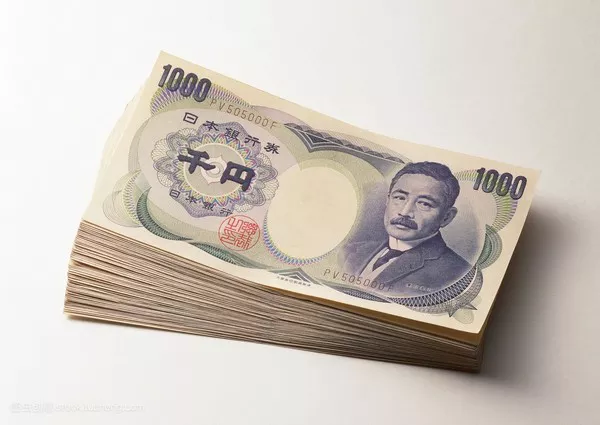Japan, a nation known for its rich cultural heritage, technological advancements, and efficient financial systems, has a diverse array of payment methods that cater to the needs of both locals and visitors. The Japanese yen (JPY), as the official currency, plays a central role in these transactions. In this comprehensive guide, we will explore the various Japanese yen payment methods, from traditional practices to the latest digital innovations, shedding light on the intricacies of conducting transactions in the Land of the Rising Sun.
Cash Transactions: A Cultural Norm
Japan is a country where cash remains a dominant form of payment, deeply rooted in cultural and historical practices. The use of cash is widespread, and many small businesses, traditional markets, and local establishments may prefer or only accept cash payments. Visitors to Japan should be prepared to carry an ample amount of yen in cash to navigate these situations smoothly.
Coins and Banknotes:
a. Coins: Yen coins are available in denominations of 1, 5, 10, 50, 100, and 500. These coins are commonly used for everyday transactions such as purchasing snacks, riding public transportation, or making small donations at temples and shrines.
b. Banknotes: Yen banknotes come in denominations of 1,000, 2,000, 5,000, and 10,000. While the 2,000 yen note is a less common denomination, the other notes are widely circulated. Larger denominations are commonly used for more significant transactions such as hotel payments and shopping.
Traditional Payment Methods:
Cash at Conventional Stores:
Traditional retail outlets, local markets, and smaller businesses in Japan predominantly accept cash. Many establishments may not have the infrastructure to process card transactions, emphasizing the importance of carrying sufficient cash for daily expenses.
Cash Envelopes for Gifts (Otoshibukuro):
In Japanese culture, giving monetary gifts in cash envelopes, known as “otoshibukuro,” is a common practice. This tradition is often observed during celebrations such as weddings, birthdays, and New Year’s. The amount of money given is carefully chosen and symbolizes good luck and prosperity.
Card Payments: The Rise of Plastic Money
While cash remains prevalent, Japan has witnessed a gradual increase in card payments, especially in urban areas and larger establishments. Credit and debit cards, both international and domestic, are accepted at many hotels, department stores, and popular tourist destinations.
Credit and Debit Cards:
a. International Cards: Major credit cards like Visa, MasterCard, and American Express are widely accepted in urban areas, tourist destinations, and larger establishments. However, it’s advisable to carry some cash for places that may not accept cards.
b. Domestic Cards: Japanese credit and debit cards, such as those issued by JCB, Visa Japan, and MasterCard Japan, are commonly used. These cards often come with special perks and discounts for local consumers.
IC Cards (Suica, Pasmo):
IC cards, such as Suica and Pasmo, are rechargeable smart cards that can be used for public transportation (trains, buses, and subways) and at vending machines, convenience stores, and selected shops. These cards offer a convenient and efficient way to make small transactions and are a popular choice among both locals and visitors.
Digital Payment Innovations:
Japan has embraced digital payment solutions, reflecting the country’s technological prowess and commitment to innovation. While not as prevalent as in some other countries, digital payment methods are gaining traction, providing additional options for consumers.
Mobile Payments:
a. QR Code Payments: Services like PayPay, LINE Pay, and Rakuten Pay allow users to make payments by scanning QR codes. These platforms often offer cashback and discounts, encouraging users to adopt this convenient payment method.
b. Apple Pay and Google Pay: International visitors can use Apple Pay and Google Pay at stores equipped with contactless payment terminals. However, it’s essential to check the compatibility of these services with local systems.
Online Banking and E-Wallets:
a. Banking Apps: Japanese banks provide mobile apps that enable users to manage accounts, transfer funds, and make payments seamlessly. Some of the prominent banks include Mizuho Bank, Sumitomo Mitsui Banking Corporation, and Japan Post Bank.
b. E-Wallets: While not as widely used as in some other countries, e-wallets like iD and QUICPay are gaining popularity. These platforms allow users to link their cards to digital wallets for quick and secure transactions.
Navigating Cultural Aspects:
Respectful Handling of Cash:
In Japanese culture, the respectful handling of cash is paramount. When making a payment, it is customary to hand over cash using both hands as a sign of politeness and respect. The same practice applies when receiving change.
Cash-Only Establishments:
Some establishments, particularly smaller or more traditional ones, may only accept cash. It’s advisable to check for signs indicating the accepted payment methods before entering such places.
ATM Usage:
International visitors should be aware that not all ATMs in Japan accept foreign cards. Convenience stores like 7-Eleven, post offices, and specific banks with international branches are more likely to have ATMs that can handle international transactions.
See Also: 4 Japanese Currency Payment Methods in Japan
Conclusion:
Navigating Japanese yen payment methods involves a delicate balance between tradition and innovation. While cash remains deeply ingrained in the cultural fabric of Japan, the country’s embrace of digital solutions reflects its commitment to progress. Visitors to Japan will find a diverse landscape of payment options, from traditional practices at local markets to cutting-edge digital transactions in urban centers. Understanding and appreciating this multifaceted payment ecosystem will undoubtedly enhance the experience of conducting transactions in the Land of the Rising Sun.


